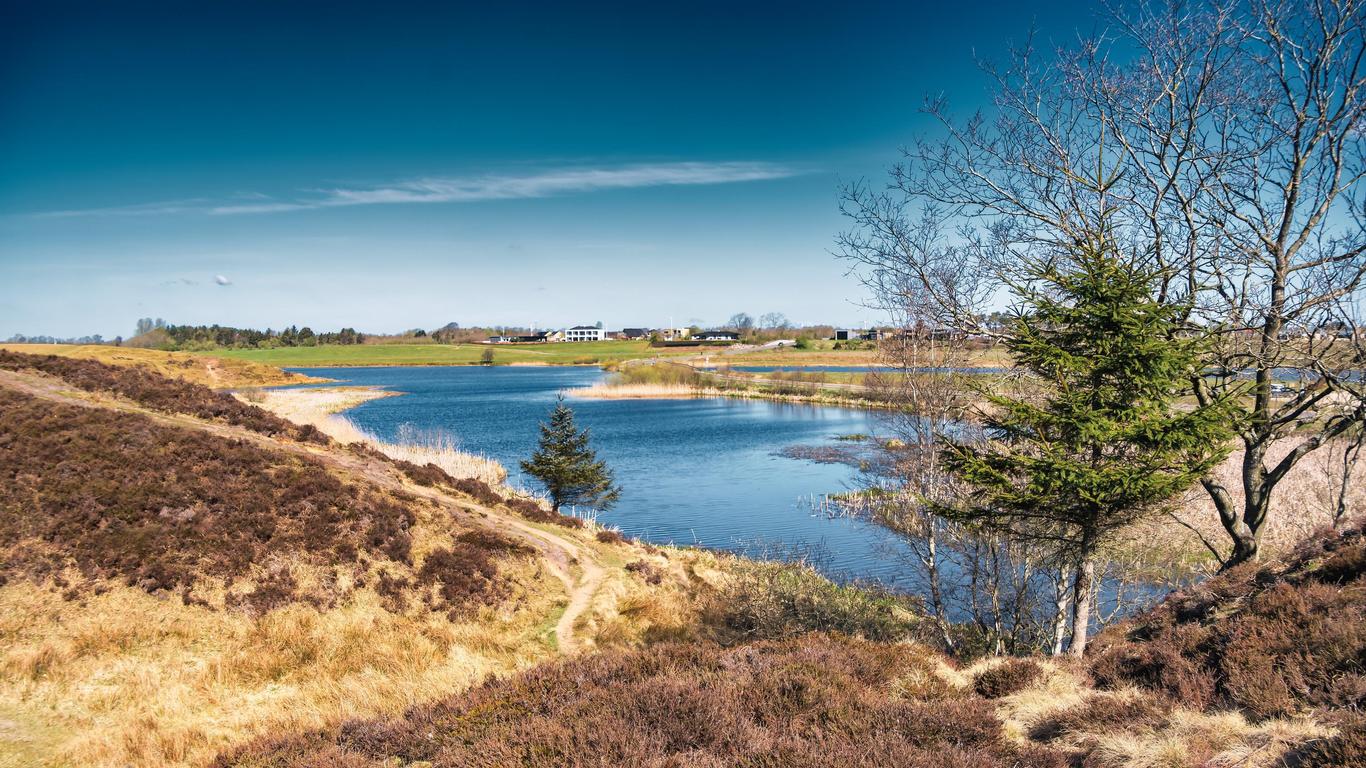Traversed by Storå Creek, Holstebro is an industrial and trade hub in the heart of western Jutland. It was first mentioned in the 13th century and was largely destroyed by a fire in 1552 before being severely damaged by Denmark’s most devastating tornado in 1962. Today, Holstebro is home to fine cultural museums and hosts a vibrant arts festival each summer.
Things to do in Holstebro
In the heart of town is the Holstebro Kunstmuseum, which exhibits everything from Danish paintings to pre-Columbian ceramics and Balinese sculptures. It occupies a complex designed by the Danish architect Hanne Kjærholm that combines elements of Danish, Japanese and International Modernist styles. Nearby is the Bomhuset - Museum for Kleinkunst, Holstebro’s tiniest museum.
Also forming part of the Holstebro Kunstmuseum complex is the Holstebro Museum, which showcases the natural and cultural history of the region. Learn about the Viking Age and the local tobacco industry, as well as the iron foundry that was established in Holstebro in 1862. There’s also an exhibition dedicated to life here during the World War II occupation.
A short drive north-east of Holstebro is the Hjerl Hede Open Air Museum, which is a collection of historic buildings that offer insight into rural life throughout the centuries. It’s home to Denmark’s oldest farmhouse, the 1546-built Vinkelgården, as well as a watermill and a blacksmith’s forge. Period furnishings and household objects are exhibited in many of the buildings while traditional crafts are demonstrated during holiday periods.
Getting around Holstebro
Holstebro is around 30 minutes’ drive from Herning and 1.5 hours from Aarhus. Aarhus Airport is just under two hours away and has flights to destinations across Europe. Regular trains connect to the Holstebro railway station and buses travel throughout the town. The centre of Holstebro can easily be explored on foot.





